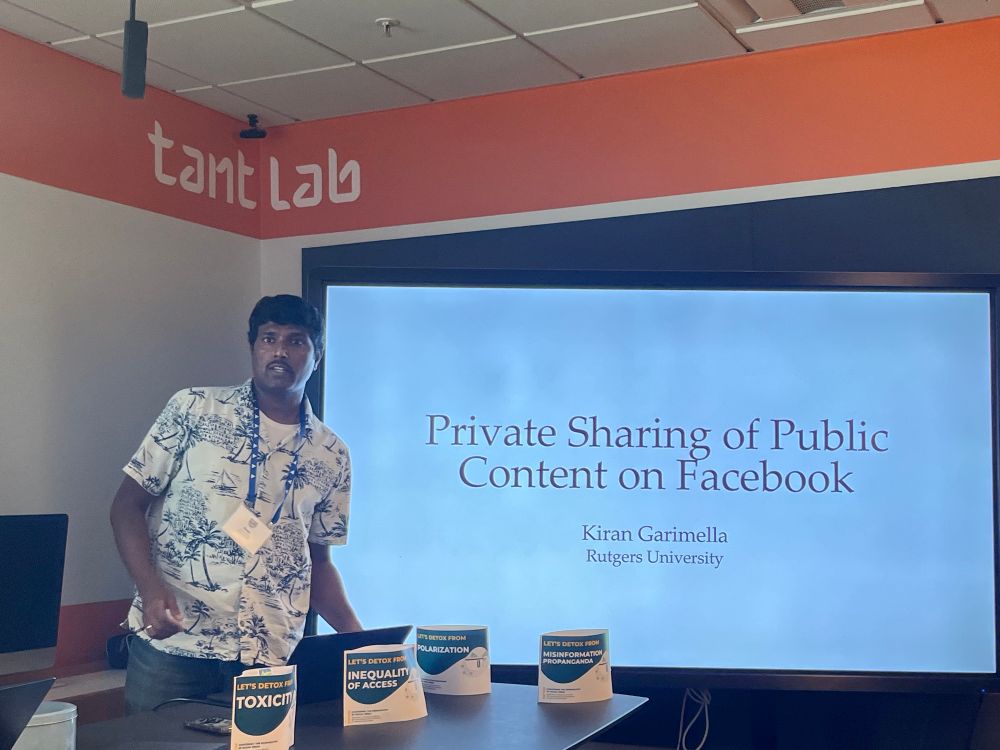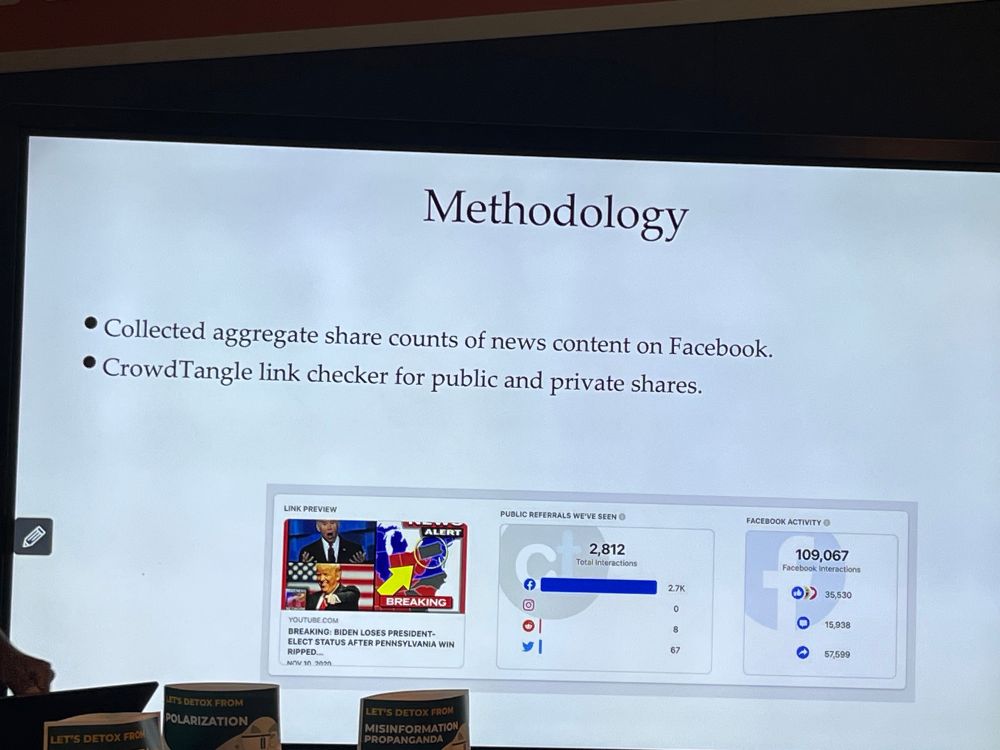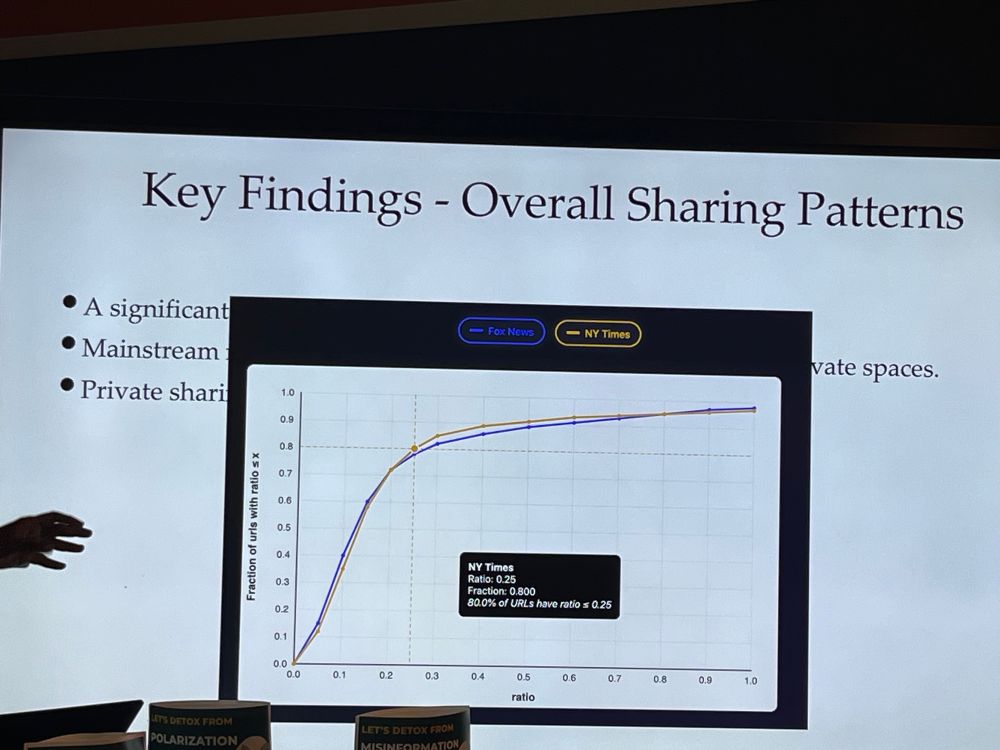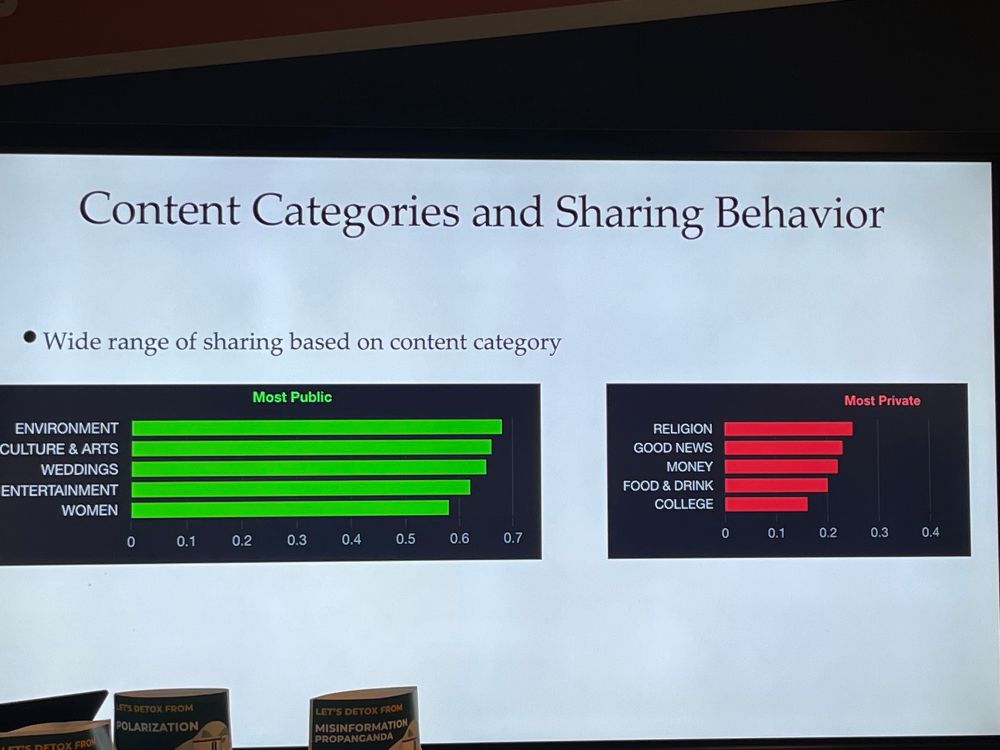
Announcing (w @adamsmith.xyz @thejonullman.bsky.social) the 2025 edition of the Foundations of Responsible Computing Job Market Profiles!
Check out 40 job market candidates in mathematical research in computation and society writ large!
Link:
drive.google.com/file/d/1zvsr...
20.10.2025 12:00 — 👍 21 🔁 13 💬 0 📌 0
A 2024 study found that ants best humans at tests of collective intelligence.
Learn more on #WorldAnimalDay: https://scim.ag/42nMvQJ
04.10.2025 18:19 — 👍 208 🔁 58 💬 11 📌 12

OUR BLESSED mixed models vs THEIR BARABAROUS fixed effects
OUR GLORIOUS Mundlak device vs THEIR WICKED demeaning
OUR GREAT variance components vs THEIR PRIMITIVE dummy variables
OUR NOBLE partial pooling vs THEIR BACKWARD unbiased estimates
OUR HEROIC maximum likelihoos vs THEIR BRUTISH least squares
I could have sworn I created this before on our Previous Parish, but couldn't find it so made it fresh.
I present:
OUR BLESSED mixed models // THEIR BARBAROUS fixed effects
09.09.2025 13:49 — 👍 103 🔁 25 💬 4 📌 2

Front cover: Differential Privacy in Artificial Intelligence: From Theory to Practice, now Publishers
New differential #privacy textbook in town: "DP in Artificial Intelligence: From Theory to Practice", by @nandofioretto.bsky.social and @vanhentenryck.bsky.social. Open access, w/ chapters by @jubaz.bsky.social, @grahamrc.bsky.social, and @stein.ke!
www.nowpublishers.com/article/Book...
25.08.2025 22:45 — 👍 16 🔁 7 💬 1 📌 0
ALT 2026 | ALT 2026 Homepage
The 37th International Conference on Algorithmic Learning Theory
🚨 I am co-chairing ALT 2026 this year with Matus Telgarsky. The submission server is open so please submit your best work!
Deadline: Oct 2, 2025 AoE
Confernece: Feb 23-26, 2026 in Toronto!
Website: algorithmiclearningtheory.org/alt2026/
04.09.2025 19:01 — 👍 13 🔁 3 💬 0 📌 0
Socio-Spatial Patterns of Suicide Mortality in the United States https://www.medrxiv.org/content/10.1101/2025.08.29.25334693v1
02.09.2025 22:40 — 👍 1 🔁 1 💬 0 📌 0

🚨 New postdoc position in our lab at Berkeley EECS! 🚨
(please reshare)
We seek applicants with experience in language modeling who are excited about high-impact applications in the health and social sciences!
More info in thread
1/3
22.08.2025 14:11 — 👍 21 🔁 12 💬 1 📌 3
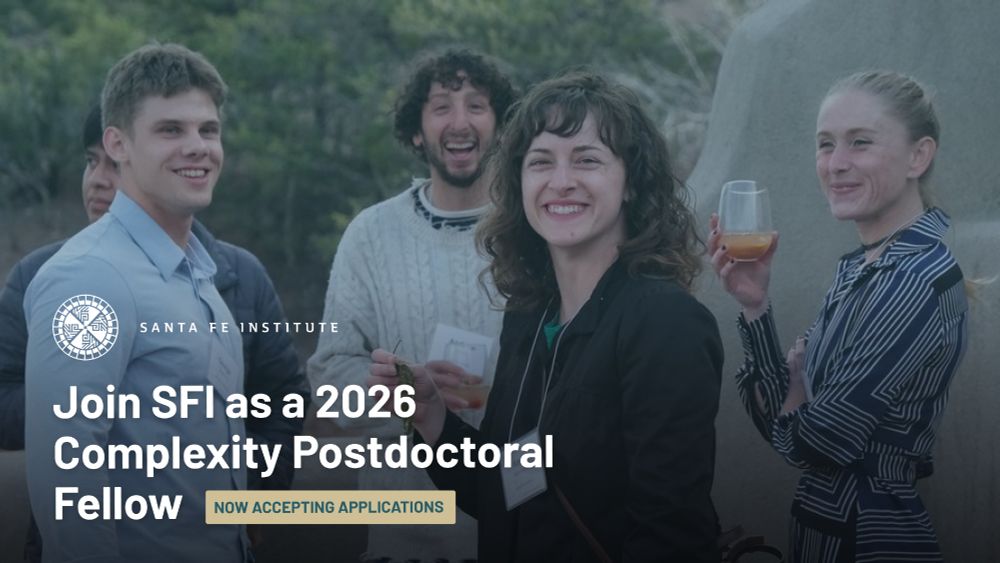
Applications are open for SFI's 2026 Complexity Postdoctoral Fellowships. SFI offers early-career scholars intellectual freedom, competitive benefits, research funds, and collaboration with leading scientists.
Learn more: santafe.edu/news-center/news/join-sfi-as-a-complexity-postdoctoral-fellow
19.08.2025 16:50 — 👍 15 🔁 6 💬 0 📌 0
I've been working on a new tool, Refine, to make scholars more productive. If you're interested in being among the very first to try the beta, please read on.
Refine leverages the best current AI models to draw your attention to potential errors and clarity issues in research paper drafts.
1/
24.07.2025 03:24 — 👍 321 🔁 88 💬 28 📌 22
Great news! congrats:)
20.07.2025 05:20 — 👍 1 🔁 0 💬 0 📌 0

Nice new paper in PNAS providing further evidence that random/long ties help social contagions — even many that would be labeled "complex contagions"
www.pnas.org/doi/10.1073/... @davidlazer.bsky.social
16.07.2025 00:06 — 👍 37 🔁 6 💬 0 📌 0
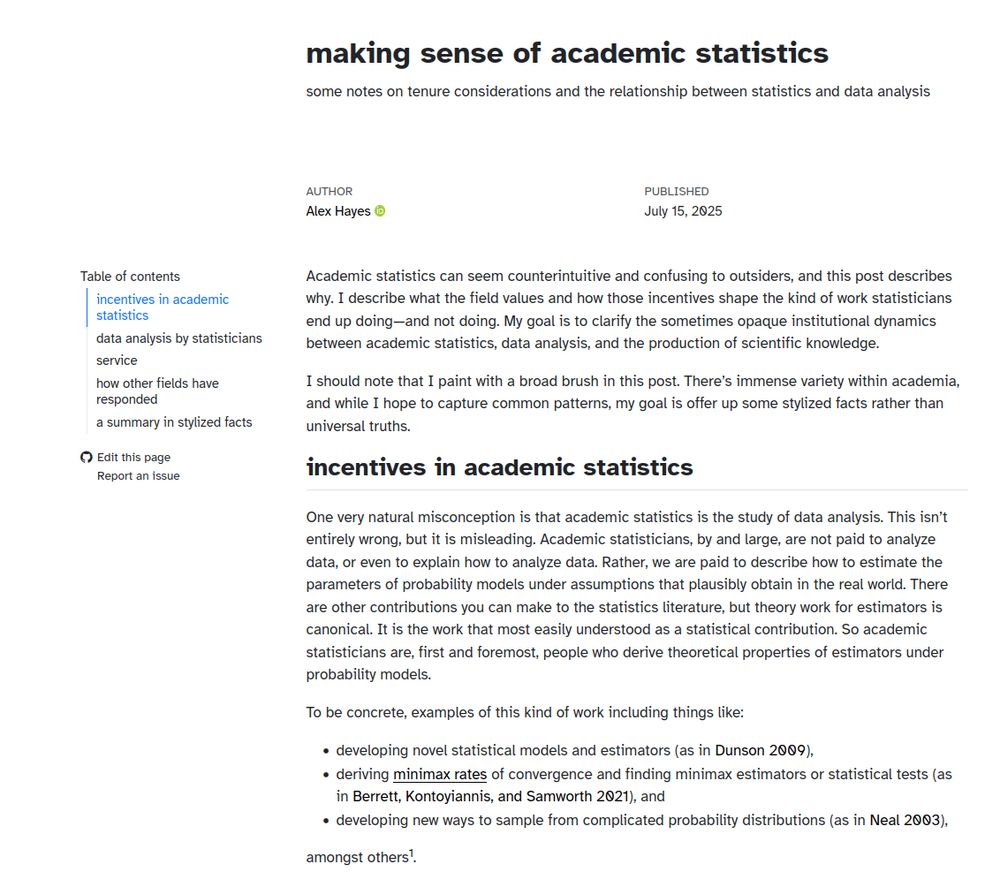
Screenshot of the text of the linked blogpost 1/4
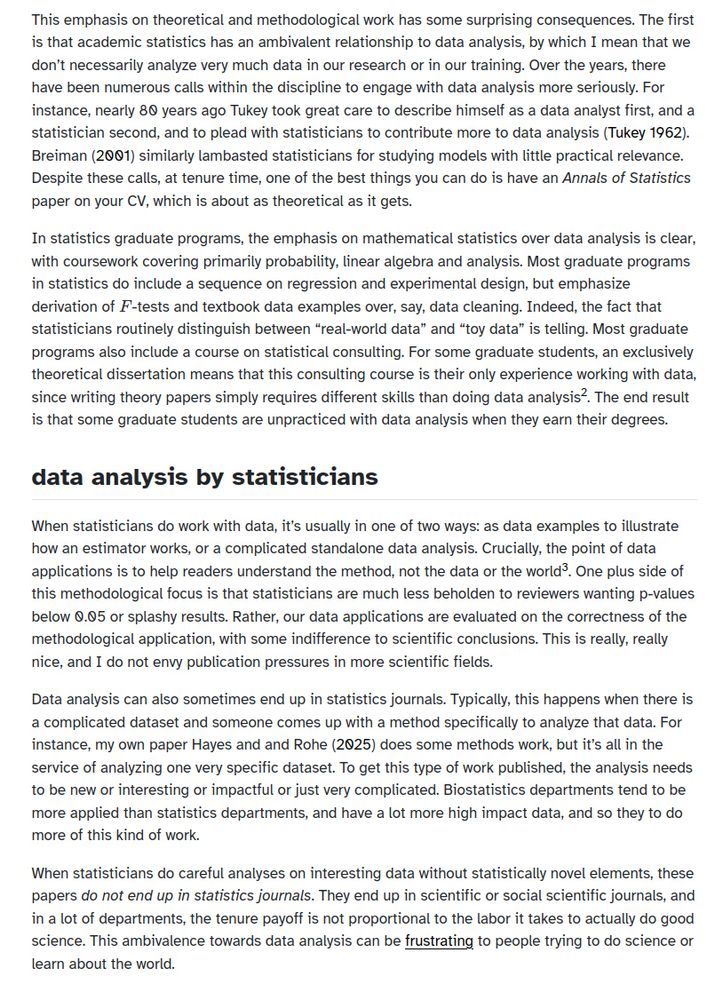
Screenshot of the text of the linked blogpost 2/4
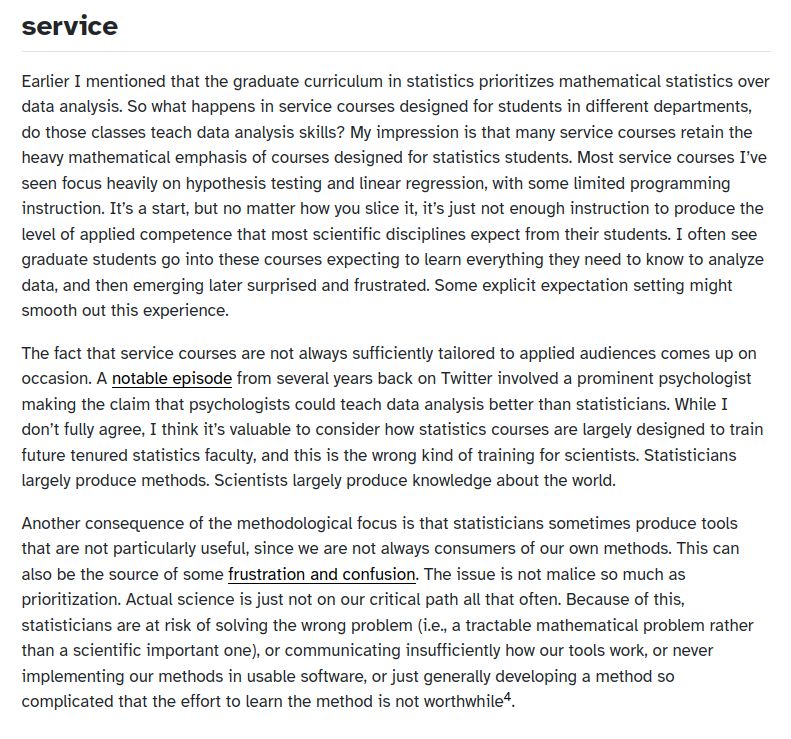
Screenshot of the text of the linked blogpost 3/4
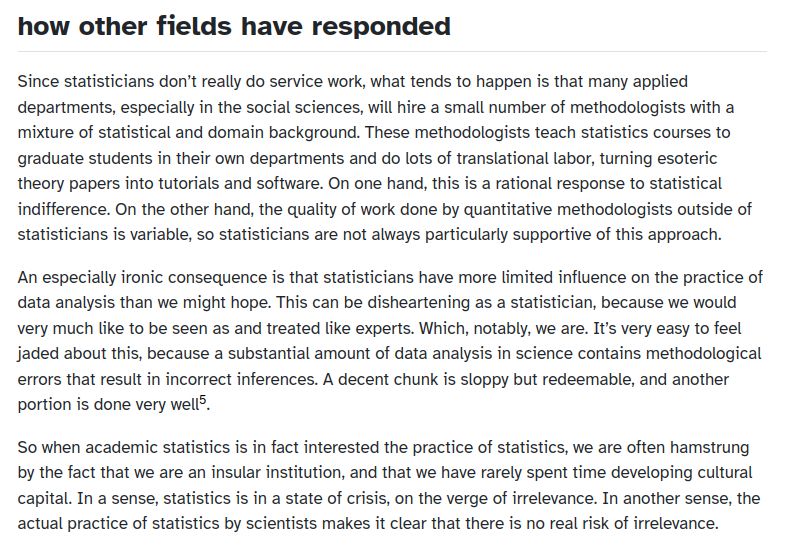
Screenshot of the text of the linked blogpost 4/4
~~ making sense of academic statistics ~~
i wrote about the confusing relationship between statistics and data analysis, and also about how statistics relates to science
#statistics #rstats #datascience
www.alexpghayes.com/post/making-...
15.07.2025 20:15 — 👍 108 🔁 17 💬 14 📌 8

Who Sees Who?
In the comedy Home Alone, a burglar posing as a police officer walks door to door during the holidays to find out which families will be traveling, leaving their empty homes easy prey for a break-in. ...
- differentially private distributed estimation & learning arxiv.org/abs/2306.15865 IISE transactions, featured: content.presspage.com/uploads/2602...
- differentially private distributed inference arxiv.org/abs/2402.08156
- privacy-preserving sequential learning arxiv.org/abs/2502.19525 (FORC'25)
11.07.2025 23:44 — 👍 0 🔁 0 💬 0 📌 0
🚨Free data alert!! 🚨 Please share.
Large new dataset of Amazon product reviews, including full text and photos and product characteristics, with individual *reviews labeled as fake reviews*.
I believe this is the first publicly available data of this kind.
github.com/bretthollenb...
11.07.2025 21:17 — 👍 127 🔁 43 💬 1 📌 2

Postdoctoral Position | Center for Adaptive Rationality
We are hiring, @arc-mpib.bsky.social a postdoc for a project to investigate why citizens feel alienated from liberal democracy and how a shared sense of reality can be restored.
Work with @lfoswaldo.bsky.social @anaskozyreva.bsky.social, Ralph Hertwig and me:
www.mpib-berlin.mpg.de/2084802/2025...
19.06.2025 12:18 — 👍 27 🔁 19 💬 0 📌 1
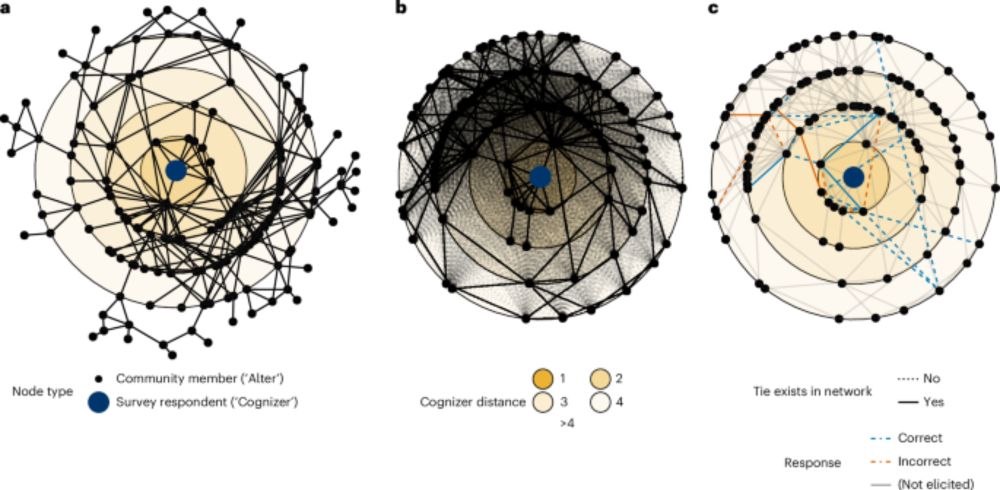
Cognitive representations of social networks in isolated villages - Nature Human Behaviour
Feltham et al. develop a sampling strategy to evaluate social network cognition across 82 Honduran villages, systematically mapping the underlying village networks.
New by @ericfeltham.bsky.social, Laura Forastiere, and @nachristakis.bsky.social: an extraordinarily ambitious effort to scale up and bring Krackhardt's classic work on cognitive social structures (CSSs) into the 21st century. Super excited to see it in print. www.nature.com/articles/s41...
16.06.2025 21:30 — 👍 44 🔁 13 💬 0 📌 0

People not only form social networks, they construct mental maps of them. People think about the ties between other people, including ties among individuals to whom they are not themselves directly connected. These “cognitive social networks” have rarely been studied. 1/
16.06.2025 16:22 — 👍 34 🔁 12 💬 1 📌 1
in a sequential social learning scenario, a sequence of agents make binary decisions on the basis of their private signals and information available to them from past choices. information cascade in this scenario refers to discounting of new private information in favor of past public actions
06.06.2025 22:46 — 👍 4 🔁 1 💬 1 📌 0
@yuxin-pitt.bsky.social presenting shortly in responsiblecomputing.org/forc-2025/ (extended abstract: drops.dagstuhl.de/entities/vol... - working paper: arxiv.org/abs/2502.19525) also last month at the Network Science in Economics conference, both in beautiful Stanford bsky.app/profile/yuxi...
06.06.2025 22:46 — 👍 0 🔁 0 💬 0 📌 0
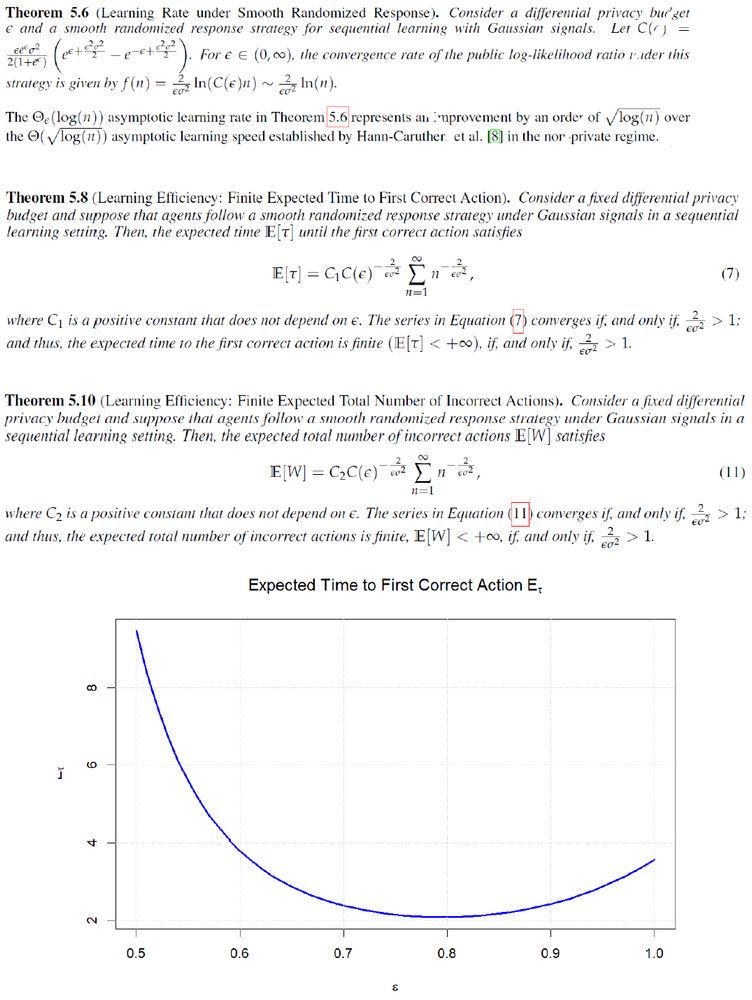
smooth randomized response guarantees learning at log(n) rate that is much faster than the sqrt(log n) rate in the non-private case & achieves finite expected times to the first correct action and last incorrect action, both of which are infinite in the non-private case + same eps can minimize both
06.06.2025 22:46 — 👍 0 🔁 0 💬 1 📌 0
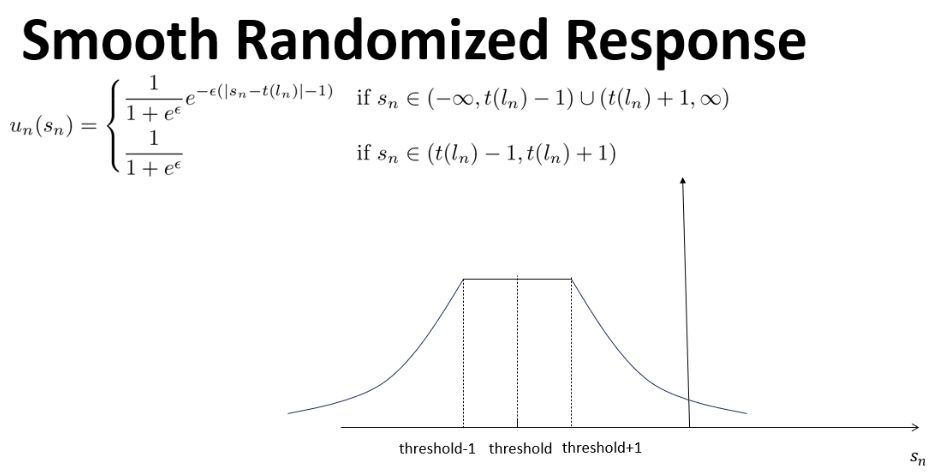
a simple randomized response that flips actions with constant probability will prevents any cascade and asymptotic learning, but we can use a smooth version that hides signal locations within a range; this way, actions can be flipped with a probability that decays smoothly outside the range
06.06.2025 22:46 — 👍 0 🔁 0 💬 1 📌 0
Research Scientist at the University of Washington based in Brooklyn. Also: SFI External Applied Fellow, Harvard BKC affiliate. Collective Behavior, Statistics, etc..
Psychology prof at UniMelb, co-director of MetaMelb (interdisciplinary metascience lab).
Live (mostly) in Sydney.
Study credibility of science & how to improve it.
@siminevazire on Twitter
Providing expert advice on some of the most pressing challenges facing the nation and world. Non-partisan. Non-profit. https://nationalacademies.org
The Vermont Complex Systems Institute at the University of Vermont is a post-disciplinary team working on real-world, data-rich, meaningful complex systems problems of all kinds. https://vermontcomplexsystems.org/
Machine Learning in Society | Philosophy of Science | PhD student @ Uni Tübingen | fm.ls/ben
Postdoc at MSR, soon a prof at UW HCDE, got my PhD at Cornell IS. I think about power, privacy, and participation in HCI, security and AI.
Cutting-edge research, news, commentary, and visuals from the Science family of journals. https://www.science.org
MIT Researcher, he/him, Senior Visiting Researcher @ Ritsumeikan, Co-Founder of Humanyze, former Senior Researcher @ HBS, author of People Analytics. AI, management, law, corporate governance, psychology, anthropology, ethics, and similar topics
At CMU, the (Blue)sky's the limit. United by curiosity and driven by passion, we reach across disciplines, forge new ground and deploy our expertise to make real change that benefits humankind.
CyLab is @cmu.edu's Security & Privacy Institute. Our 300+ researchers are passionate about creating a world in which technology can be trusted. Follow our latest research at https://www.cylab.cmu.edu/.
At Carnegie Mellon University's Software and Societal Systems Department (S3D), we solve big, complex challenges at the critical intersection of technology and society.
Connecting laureates of mathematics and computer science with the next generation.
Imprint: http://heidelberg-laureate-forum.org/imprint.html
Assistant Professor of Operations Research and Statistics, MIT. Interested in social computing, human-in-the-loop of AI decision making, recommendation systems, and AI policy.
Automatically tweets new posts from http://statmodeling.stat.columbia.edu
Please respond in the comment section of the blog.
Old posts spool at https://twitter.com/StatRetro
Professor in computational Bayesian modeling at Aalto University, Finland. Bayesian Data Analysis 3rd ed, Regression and Other Stories, and Active Statistics co-author. #mcmc_stan and #arviz developer.
Web page https://users.aalto.fi/~ave/
the friendliest troll on bluesky 🧌
Attorney & anthroengineer focused on law, genetics & health tech, & human rights. (Asst Prof of Law, Policy, & Engineering & Anthropology at Penn State) https://sites.psu.edu/wagnerlab/ Views my own
I work with communities on citizen science for safer, fairer, more understanding Internet. Founder: Citizens & Technology Lab. Assistant Prof in Communication at Cornell · Guatemalan-American. @natematias@social.coop
natematias.com
citizensandtech.org






